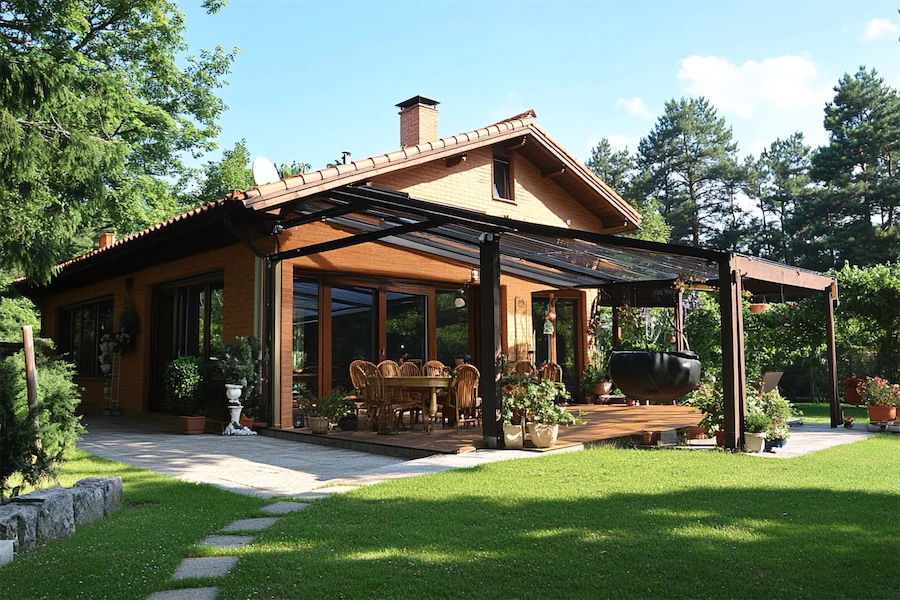Polycarbonate roofing is a popular choice for various structures due to its exceptional durability, lightweight nature, and high light transmission. This thermoplastic material is commonly used in applications such as greenhouses, patios, and carports, offering a balance between strength and transparency.
History and Origins of Polycarbonate Roofing
Polycarbonate was first developed in the mid-20th century and has since been utilized in numerous industries for its robust properties. Its application in roofing began as a solution for structures requiring natural light without compromising on strength and safety. Over time, advancements in manufacturing have led to various forms of polycarbonate roofing panels, including corrugated and multiwall designs, catering to diverse architectural needs.
Key Features of Polycarbonate Roofing
- Durability: Polycarbonate panels are virtually unbreakable, with impact resistance significantly higher than that of glass, making them ideal for areas prone to hail or falling debris.
- Lightweight: Weighing considerably less than glass, polycarbonate is easier to handle and install, reducing structural support requirements and labor costs.
- UV Protection: Many polycarbonate panels come with a UV-resistant coating, protecting against harmful ultraviolet rays while preventing yellowing and degradation of the material over time.
- Transparency: Offering up to 90% light transmission, clear polycarbonate panels allow ample natural light, creating bright and inviting spaces.
- Thermal Insulation: Multiwall polycarbonate sheets provide enhanced thermal insulation compared to single-layer panels, aiding in energy efficiency for enclosed structures.
Applications of Polycarbonate Roofing
- Greenhouses: The high light transmission and insulating properties make polycarbonate ideal for promoting plant growth while maintaining optimal temperatures.
- Patios and Pergolas: Homeowners utilize polycarbonate roofing to create outdoor living spaces that are protected from the elements yet bathed in natural light.
- Carports and Garages: The material’s strength and UV protection safeguard vehicles from weather damage and sun exposure.
- Skylights: Polycarbonate’s lightweight and durable nature makes it suitable for skylights, providing daylighting solutions without the risk of shattering.
Considerations When Choosing Polycarbonate Roofing
- Scratch Sensitivity: While highly impact-resistant, polycarbonate can be susceptible to scratching. It’s advisable to handle panels carefully during installation and consider coatings or treatments that enhance scratch resistance.
- Thermal Expansion: Polycarbonate expands and contracts with temperature fluctuations. Proper installation should accommodate this movement to prevent warping or damage, typically by allowing for expansion gaps and using appropriate fasteners.
- Cost: Although more expensive than some traditional materials, polycarbonate’s longevity and low maintenance can offer cost savings over time.
Conclusion
Polycarbonate roofing presents a versatile and resilient option for various architectural applications, combining the clarity of glass with superior strength and durability. By understanding its features and proper installation practices, builders and homeowners can effectively utilize polycarbonate to create functional and aesthetically pleasing structures.
